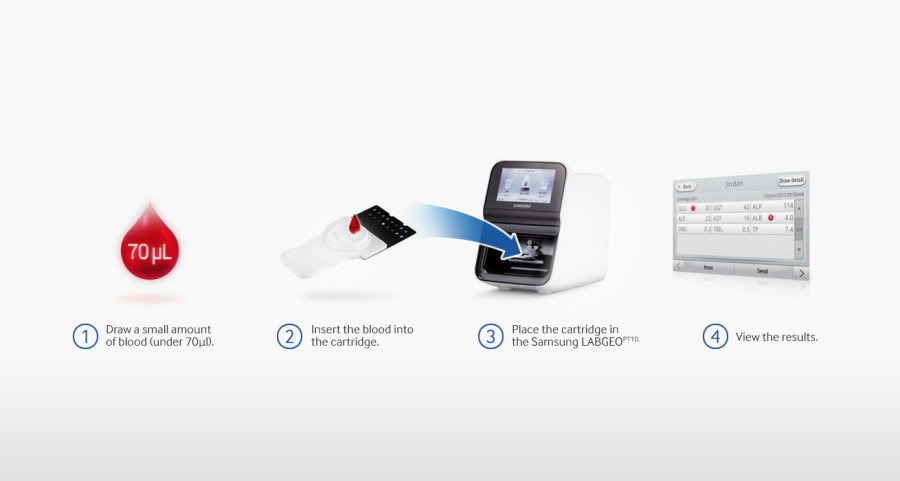In a recent i2P article a novel design and brand for a walk-in clinic was identified, and its rollout across the US.
Its’ target market vision is 62,000 pharmacies – every single pharmacy operating within the US.
(Read: Telehealth and Telemedicine – a major pharmacy opportunity in Healthspot Concept ).
Of course, it will eventually land in Australia and will impact pharmacy/doctor relationships.
It is well capitalised and is attracting big players (like Xerox Corporation) who have actually made a direct shareholding investment in the company.
In conjunction with Samsung, point of care technology is now available in a single desktop device that will surely make a big hole in the pathology laboratory business.
For the first time technology allows pharmacists to connect with other areas of primary healthcare through referrals based on advanced patient investigations.
Through this “cutting-edge” technology, patients will be able to obtain fast, easy and accurate blood tests for cholesterol, diabetes and liver tests, as well as other lab tests simultaneously – and get results in as little as 7 minutes.
The Samsung device is called the LABGEO PT10 which is designed to have connectivity capabilities to patient profiles for GP’s, to a device that patients will use (possibly a mobile phone) to hold their own data storage, and of course, the pharmacy patient profile.
It is not yet registered by the FDA in the US, or the TGA in Australia – but it will be a reality within a short timeline.
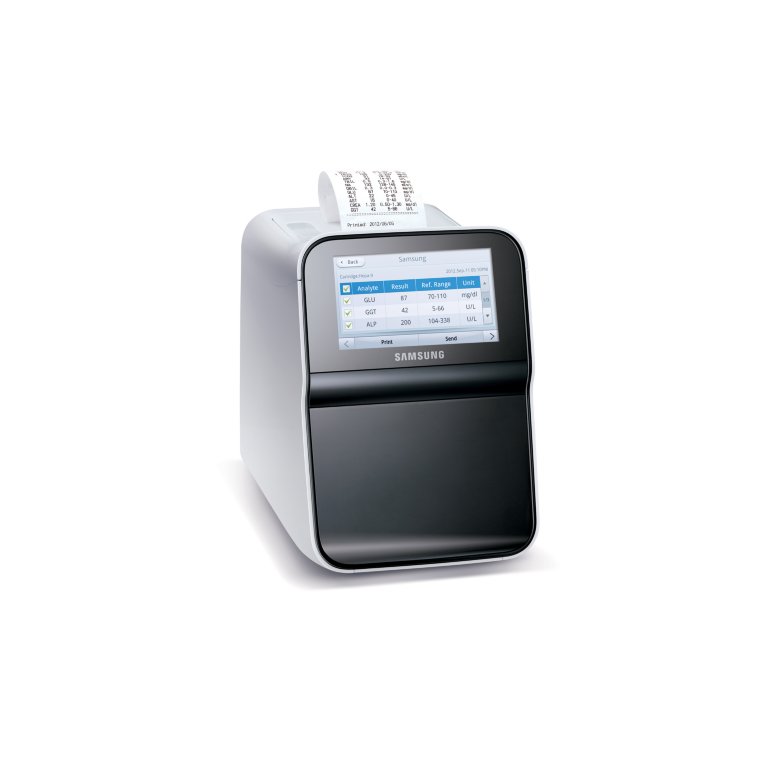
One of the more interesting advances by Healthspot is to connect patient lab results with other acquired biometrics, again using portable technology.
This means that a patient work-up can be created and then fused to other health practitioners, particularly through telehealth.
While not enthusiastically endorsed by all GP’s, telehealth nonetheless offers a platform for cheaper medical consults and the inputs surrounding diagnosis.
Costs escalating through the rapid increase in the ageing population will demand to be organised in a more economical framework.
Telehealth is just one such framework which is just a bit ahead of its time at the moment, but will be embraced as everyone becomes more familiar with the process.
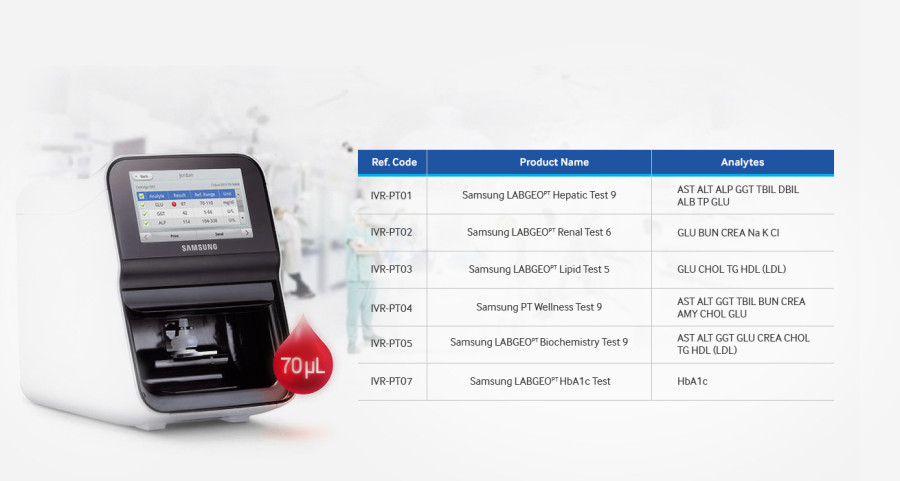
This is where pharmacy can step in with a “pharmacy-in-the-home” system to provide the logistics and use a pharmacy as an electronic hub, interfacing with the patient, a clinical pharmacist and a GP or other health practitioner.
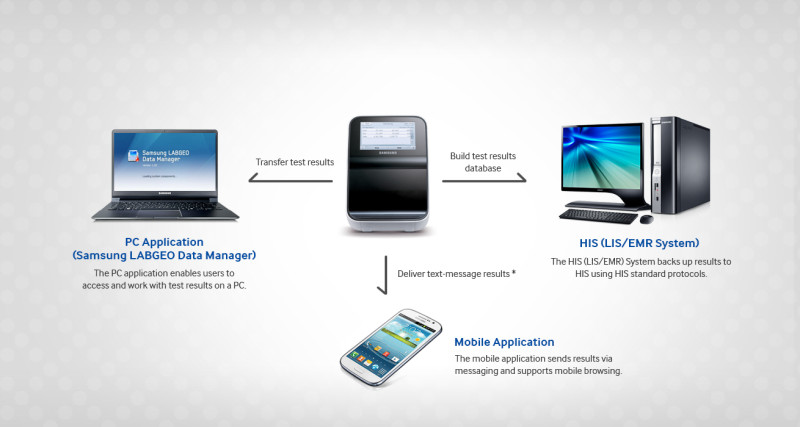
Patient benefit is that they can be interviewed by a number of health providers from a pharmacy environment, or through a pharmacy link to a patient’s home if sickness or a lack of mobility would make it difficult for a patient to travel to one or more office locations.
This is a leap-forward for the concept of ageing in place,
Pharmacists with some nursing support, are ideally situated to be able to leverage such a service to have an impact on government costs and provide good care at home.
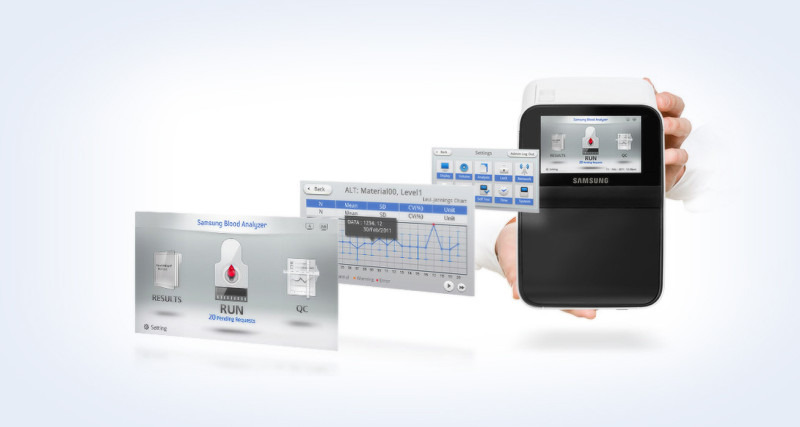
While the original article in i2P illustrated a Healthspot “pod” fully equipped with electronic biometric devices that would allow pharmacists to provide economic and fast “work ups” for a patient, there is no need to go with the highest level.
Clinical services are still in their infancy in Australia and with a well-designed consulting room you can gradually build up the best range of measurement devices that are still to appear in the marketplace.
The Samsung blood biometric device is a well thought out first offering, but the medical marketplace is a highly competitive one, and alternate offerings will be made available at cheaper prices.
The final image illustrated below shows the simple method to test a small volume of blood.
Education and training would evolve around interpretation of results rather than use of the machine or the collection of blood – it is all too simple.
That pharmacy has a natural advantage in being able to educate patients and link to them through “patient homes” of varying origin (including a pharmacy-derived version) while simultaneously developing a range of collaborations with other health practitioners creates a whole new level of opportunities.
We can only live in hope that pharmacy leadership organisations build their dynamism through fresh eyes. There are some stirrings in recent weeks, but have limited urgency and vision.
